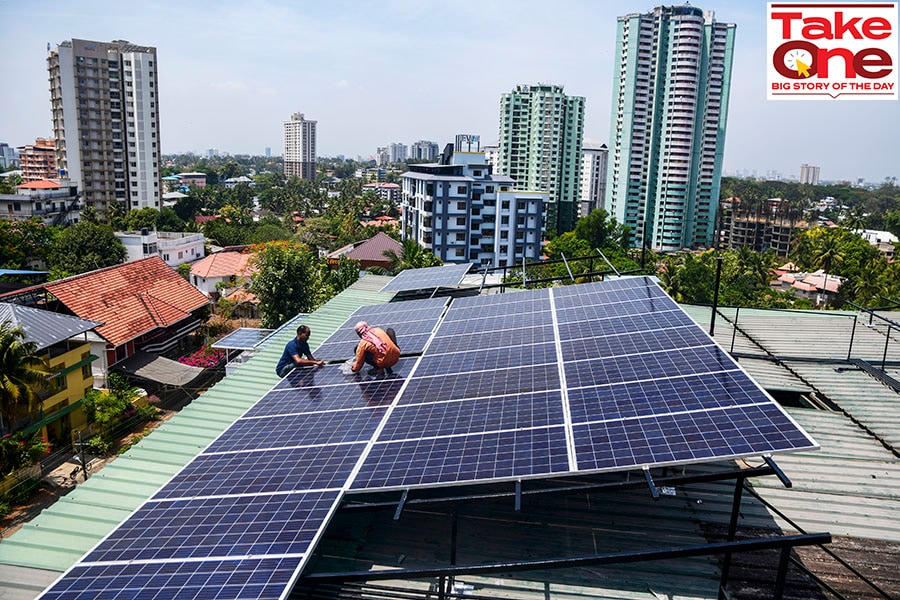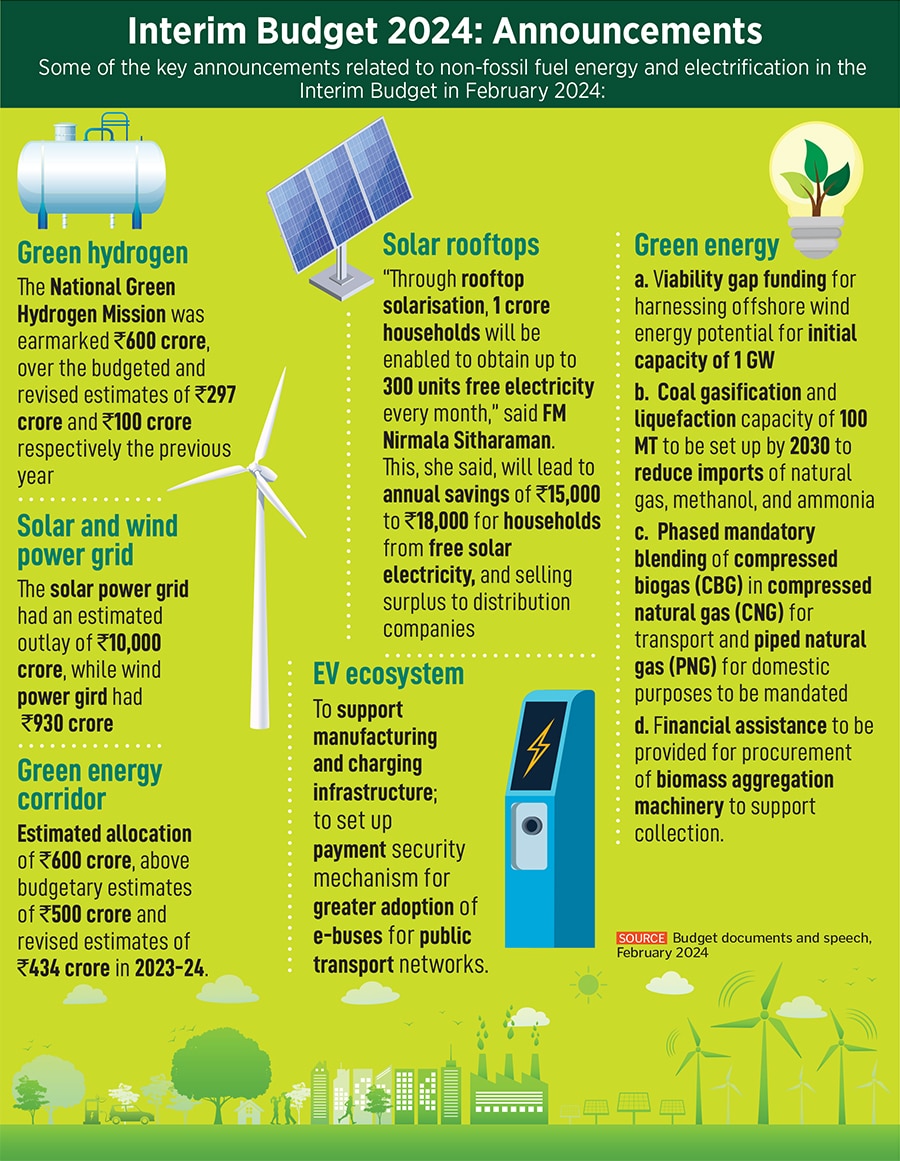
What will Union Budget 2024 do for the renewable energy sector?
The interim budget made several announcements towards building India's non-fossil fuel capacity. However, a lot more needs to be done, particularly in infrastructure and financing, if the country has to meet its energy targets
 Workers install solar panels on the roof of a residential apartment in Kochi, southern Kerala state, India.
Image: AP Photo/R S Iyer
Workers install solar panels on the roof of a residential apartment in Kochi, southern Kerala state, India.
Image: AP Photo/R S Iyer
In her interim Budget speech in February 2024, Minister of Finance Nirmala Sitharaman had made a number of announcements about green energy, particularly in the context of helping India achieve its goal of becoming a net-zero economy by 2070. India also wants to build 500 GW of non-fossil fuel energy capacity over the next six years. This capacity stands at around 200 GW, which means building an additional capacity of nearly 50 GW every year till 2030.
Financing of renewable energy projects will be crucial for the government and industry. In early June, Moody’s Ratings estimated that around $190 billion to $215 billion is required to build this 500 GW capacity by 2030. The analytics firm also estimated that another $150 billion to $170 billion investments will be required for electricity transmission and energy storage, while adding that coal will remain a major source of electricity generation over the next eight to 10 years.
The policy announcements and outlays towards renewables and the power industry in the Union Budget on July 23 will likely set the tone of how aggressively India can pursue its energy-related goals going forward.
In the interim Budget, the Ministry of New and Renewable Energy (MNRE) was earmarked an estimated Rs12,850 crore, while the Ministry of Power was earmarked an estimated Rs 20,502 crore. During that time, RK Singh (who lost the elections from the Arrah constituency in Bihar in June), had been entrusted with both the power and renewable energy portfolios.
In the new Cabinet formed by the Bharatiya Janata Party (BJP)-led National Democratic Alliance (NDA) in June, these portfolios have been split. Former Haryana Chief Minister Manohar Khattar got the Ministry of Power, while Prahlad Joshi (who earlier had the charge of coal and mines) was entrusted with MNRE; the coal portfolio is with G Kishan Reddy.



















